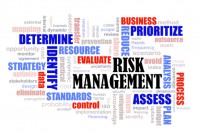Categories
- Additional Insured
- ChildrensProducts
- Claims Made
- Cyber Insurance
- Dietary Supplements and Nutraceuticals
- Ecigarettes
- Firearms Insurance
- Food Products
- Foreign Products Liability
- Foreseeable Misuse
- Frivolous Lawsuits
- General Liability
- Industrial
- Infographics
- Intellectual Property
- Looking ahead
- Marijuana Liability
- Medical Products
- Mutual Indemnification
- Nano Technology
- News
- Online Sellers Insurance Requirements
- Outsourcing
- Piercing The Corporate Veil
- Pollution Liability
- Product liability
- Product Recall
- Retail Chain Store
- Start-Up Business
- Statute of Repose
- Surplus Lines Insurance
- Technology
5 Risk Management Steps to Prevent Product Liability Claims

Being proactive lowers the risk of costly claims
Step #1: Design with safety in mind
The first and most important step for risk management is during the product design phase. During this phase you should take into account how your product will be used and ANY hazards that could result. Products must comply with government standards and obtain industry certifications. Labels, warnings and instructions should also comply with government and industry standards and be understandable by all cultures. An area often overlooked during this phase is considering if your product can be used for an alternative purpose than for which it was originally designed. As you learn of alternative ways your product is being used, you will need to address in warnings and instructions that the product is not designed for alternative purposes so as to minimize your Product Liability exposure.
Step #2: Know that if you import goods into the U.S., the insurance carriers and the courts will treat you as the manufacturer
As an importer of products and goods into the U.S., it is important to view these goods the same as if you are the manufacturer. You alone will be ultimately responsible for making sure products comply with industry standards and government regulations. Also, you will need to make sure proper safety warning labels and instructions are provided to the end user and not rely solely on the foreign providers to oversee these items.
Step #3: Transfer as much risk as possible to suppliers through formal documents
- Collecting Certificates of Insurance from all suppliers is the first and most basic step all businesses need to complete. A COI is a document that simply shows your suppliers have insurance and what limits they carry. It is important to choose suppliers that are insured in case their product becomes responsible for a product liability claim.
- Also, ask all of your suppliers to name your business as Additional Insured on their General and Product Liability policy. This allows your business to transfer all product liability claims involving their products to their General and Product Liability Insurance carrier. In other words, if you are not an Additional Insured on their policy, your policy will be primary and their policy will be secondary. If you are Additional Insured on their policy, their policy will be primary and your policy becomes secondary.
- And use Hold Harmless Agreements. This makes sure that your contractors and suppliers are contractually responsible, in the event of a claim, for their own negligence and errors or omissions.
Step #4: Keep detailed records
To prepare for the possibility of future product liability claims, manufacturers and importers should establish sound documentation policies to meet business goals and meet regulatory requirements.
For manufacturers and those that out-source manufacturing in foreign countries, it is important to keep copies of customer design specs and product orders. This should include sign off on final designs and an engineering change order system to retain any changes and provide clear and detailed reason for the changes.
You should have written steps and procedures chronicling the product flow through the manufacturing steps and quality control process. Retain the documentation to assure the quality and conformity of each of the quality control steps.
Establish a documentation retention policy to make sure important documents that may be important to an investigation or defense of product liability claim is preserved. There are guidelines for knowing how long to retain such documentation.
Step #5: Have a plan for capturing customer feedback
You should make every effort to make it as easy as possible for consumers to share their complaints and concerns. You should have a system to collect this information and review the collected information. This will allow you to identify trends that could have serious long-term consequences to your company and help you identify defective or faulty products that could lead to product recalls, product liability claims and high-profile negative publicity.
If you have questions regarding risk management and product liability claims, call 800-622-7370.
-
 Click the Button Below to Get Your
Click the Button Below to Get Your
No-Obligation Quotes from Among the
Top 18 Leading Insurance Carriers Today -
Recent Industry News
- How to Prevent Nuclear Product Liability Verdicts
- Amazon Sellers and Vendors Strategy Including Insurance Requirements
- Walmart Sellers Insurance
- Product Liability Limit Requirements of Online Sellers
- State-by-State Product Liability Analysis of Laws Impacting Businesses
- Children’s Product Liability: Strange Claims and Need for Insurance
- Product Liability vs. Environmental Insurance for the Chemical Industry
- Product Liability in the 3D Printing Industry: New Materials and Their Significance
- Product Liability Concerns in Agricultural Equipment Enhanced with Artificial Intelligence
- Navigate Product Liability in Battery and Solar Industry
Monthly News Archives
